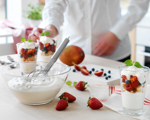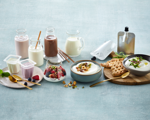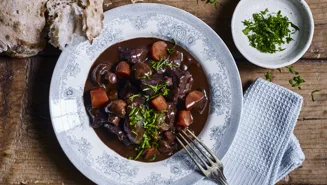
Yes and no. Lactose is a milk sugar that occurs naturally in dairy, and it varies from one bread type to another if it has dairy added or not.
We can make a distinction between three types:
- Bread with lactose
- Bread with no lactose (meaning that there is not and has not been any lactose in it)
- Lactose-free bread (meaning that lactose has been removed)
Bread is a staple for many in meals throughout the day. Whether it contains lactose or not depends entirely on the ingredients used to make it, and you can read more about that below.
How to know if bread is lactose-free?
If bread is certified lactose-free, it should say so on the label. However, what counts as “lactose-free” varies in different countries, so be sure to check local rules and regulations if you want to make sure whether a product is lactose-free or still contains some trace amounts.
To determine whether store-bought bread contains lactose in general, you should check the ingredients list on the packaging. Look for ingredients such as milk, cream, whey, casein, evaporated milk, or any other dairy products like butter, yoghurt, and cheese.
If you are buying your bread freshly baked and are unsure whether it contains lactose, you can always ask the staff for assistance. They should be able to provide you with information about the ingredients used in their tasty goods.
What kind of bread is lactose-free?
Many types of bread do not contain lactose. Often, basic bread recipes only require ingredients like flour, water, yeast, and salt. In other words, no dairy products. This is true for traditional, yet popular, types such as white, brown, rye, sourdough, and wholemeal as well as classics like baguette, focaccia, and pita.
However, there are other types of bread that are enriched with dairy like sweet brioche, flaky croissant, milk bread, soda bread, some bagels, and some flatbreads like Indian naan. It all depends on the recipe, baker, or brand making the bread, but these will often contain some kind of dairy and thus lactose. If the regular dairy has been replaced by a lactose-free version, the bread will be lactose-free.
Remember that milk (cow's milk, goat's milk, and sheep's milk alike), cream, and fresh cheeses like ricotta, cottage cheese, and cream cheese contain more lactose than fermented products like buttermilk, yoghurt, and aged cheeses like cheddar and parmesan. This is the case in general, but it might depend on the brand and production method. You can read more about this in our article about lactose-free cheese types.
How to make lactose-free bread at home?
Most bread recipes do not contain lactose as they usually simply call for a combination of flour, water, yeast, and salt. But if your favourite kind of bread is enriched, like buttery brioche or flavourful naan, simply choose lactose-free dairy products like milk, butter, and yoghurt that have had their lactose removed to make the bread lactose-free.
How are lactose-free products for bread baking made?
Many great lactose-free products are produced from milk that has been treated with lactase, an enzyme that converts lactose into the simpler forms of sugar: glucose and galactose.
At Arla, when we manufacture lactose-free products, the milk typically undergoes ultrafiltration before the enzymatic treatment. This technique is our preferred method, as it ensures minimal traces of lactose while maintaining optimal flavour. Our specialised filtration system lowers the milk's carbohydrate content, helping to keep its traditional flavour.
You can read more specifically about the production of these products in our articles 'What is lactose-free milk?', 'Is yoghurt lactose-free?’, ‘Does cream have lactose?’, and 'Does butter have lactose?'.
Does lactose-free bread taste differently?
If it is a recipe with dairy products made with lactose-free dairy alternatives, for example, lactose-free milk, butter, or yoghurt, it tastes just like the regular kind. These alternatives do not compromise on flavour and texture, ensuring you the best, most delicious, result.









































